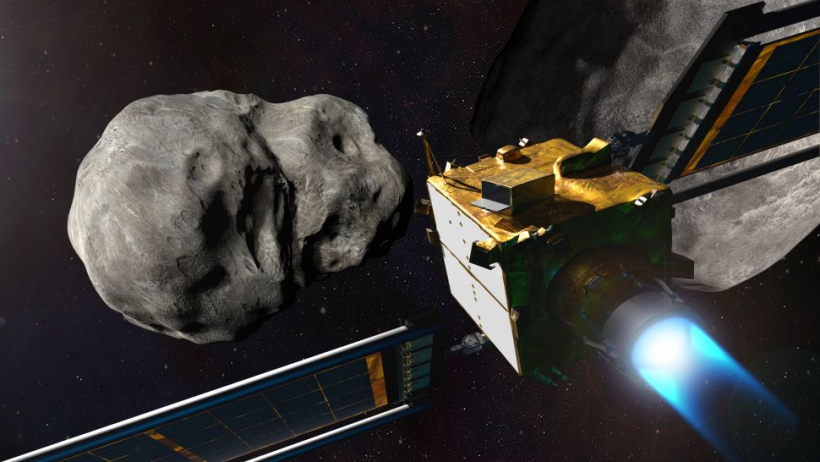NASA's Double Asteroid Redirection Test (DART) spacecraft will collide with an unfortunate asteroid named Dimorphos on September 26 at 7:14 PM EDT.
The spacecraft will make history when it crashes into the asteroid in the Earth's first ever planetary defense. Space fans can watch the live streaming of the historical event on space websites that will operate viewing. Returning to its beginning, NASA's DART launched almost a year ago on November 24, 2021. The test will serve as a "kinetic impactor" to change the orbit of an asteroid.
The Dimorphos, DART's target, stands about 56 feet (170 meters) wide and paths its parent asteroid, Didymos, every 11 hours and 55 minutes. According to NASA, it is about 7 million miles (9.6 million kilometers) from the blue planet and has no risk of impacting the Earth.
The space agency added that the DART would hit Dimorphos with a speed of 14,760 mph or 23 760 kph.
DART's Mission and Position
NASA officials wrote in a press release saying that after the final maneuver on September 25, a day before the impact, NASA's navigation team will be able to know the position of the target within 2 kilometers (1.2 miles), and added saying, "From there, DART will be on its own to guide itself to its collision with the asteroid moonlet autonomously."
Doctor Nancy Chabot from the JHUAPL or Johns Hopkins University Applied Physics Laboratory, told BBC News, " [the] DART is the first planetary defense test mission to demonstrate running a spacecraft into an asteroid to move the position of the asteroid ever so slightly in space."
Johns Hopkins University played a special role in the DART mission; Doctor Chabot, who leads the mission for NASA, also mentioned that the DART would aid the future positioning of the asteroids against the Earth.

Artist's illustration shows the DART spacecraft approaching Dimorphous.
ALSO READ: NASA DART Mission to 'Kill,' Deflect Asteroid At 15,000mph This September
Astral Collisions Against Earth
NASA clarified ahead of the launch of DART that there would be no known celestial body larger than 140 meters with a slight chance of hitting the Earth for the next century; only about 40 percent of those asteroids have been known as of Oct. 2021.
The DART's target, Dimorphos, is significantly tinier than the Chicxulub asteroid that played a deadly role against the dinosaurs 66 million years ago.
The agency then added the importance of testing the technique on smaller asteroid targets to develop further data for theoretically greater threats due to being more common.
Furthermore, a celestial body of any significant size hitting the Earth is still extremely unlikely. Asteroid Bennu is claimed to be the most likely to do so. Based on the Science Direct report, early 2022, it gave one in 1,750 chances of collision in the next 300 years.
DART's mission lead system engineer at JHUAPL, Elena Adams, claims that there is a 91 to 99% successful impact rate if the DART's camera can see its target, she said in a report from Space.com.
The collision should kick up a huge plume of ejecta called the LICIACube. Three minutes after the collision, the LICIACube will fly by the impact site, shoot images of the ejecta plume created by the DART and Dimorphos impact, and then send them back to Earth. The captured image will be released possibly on September 28, NASA said.
RELATED ARTICLE: NASA Successfully Launches DART Mission to Nudge Asteroid Off Course [WATCH]
Check out more news and information on Space in Science Times.














